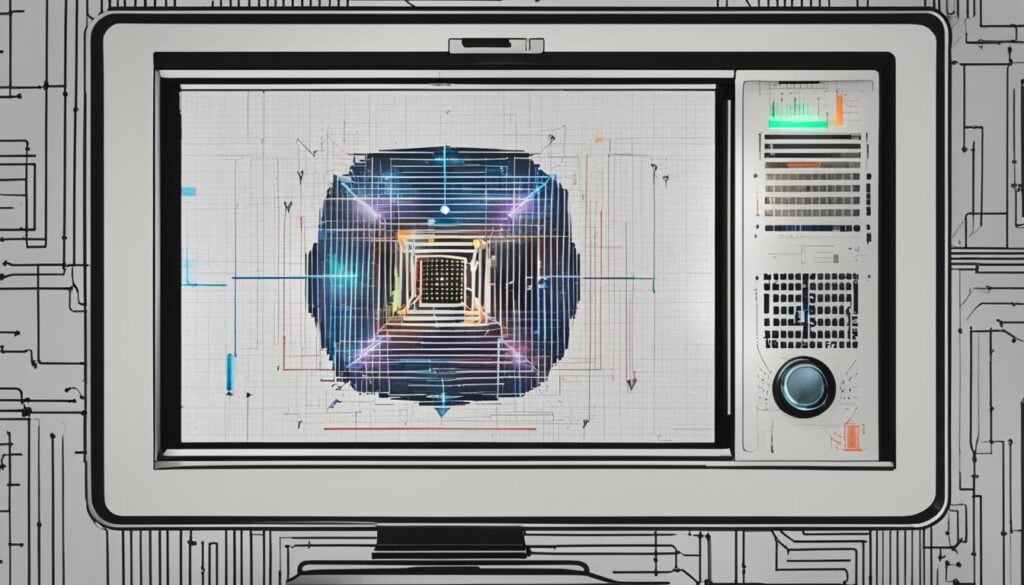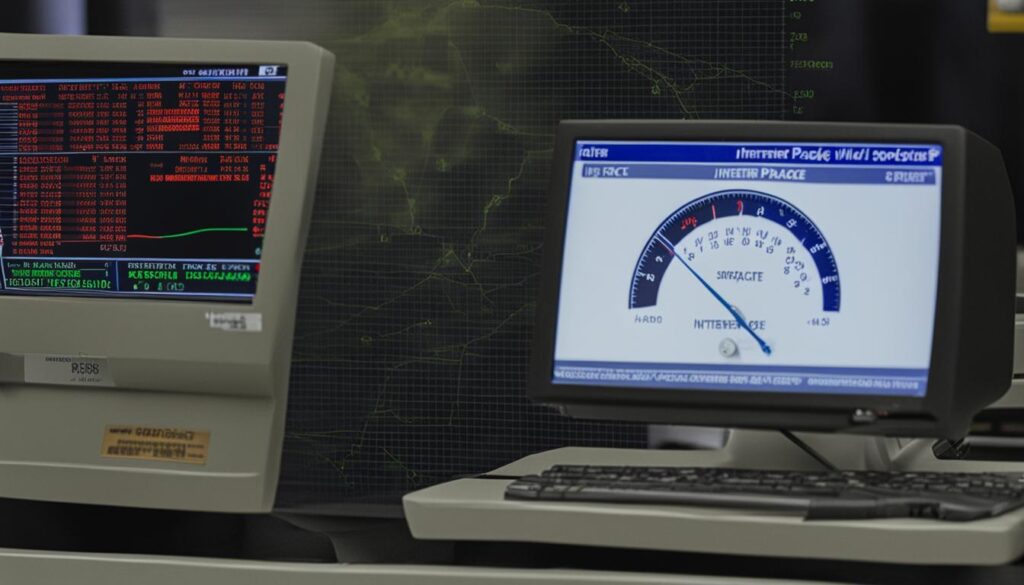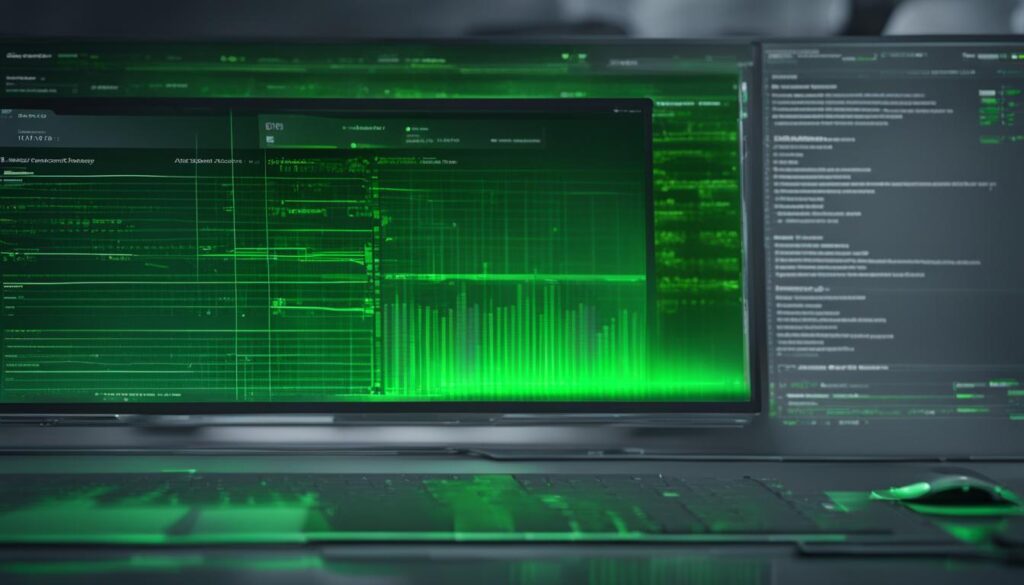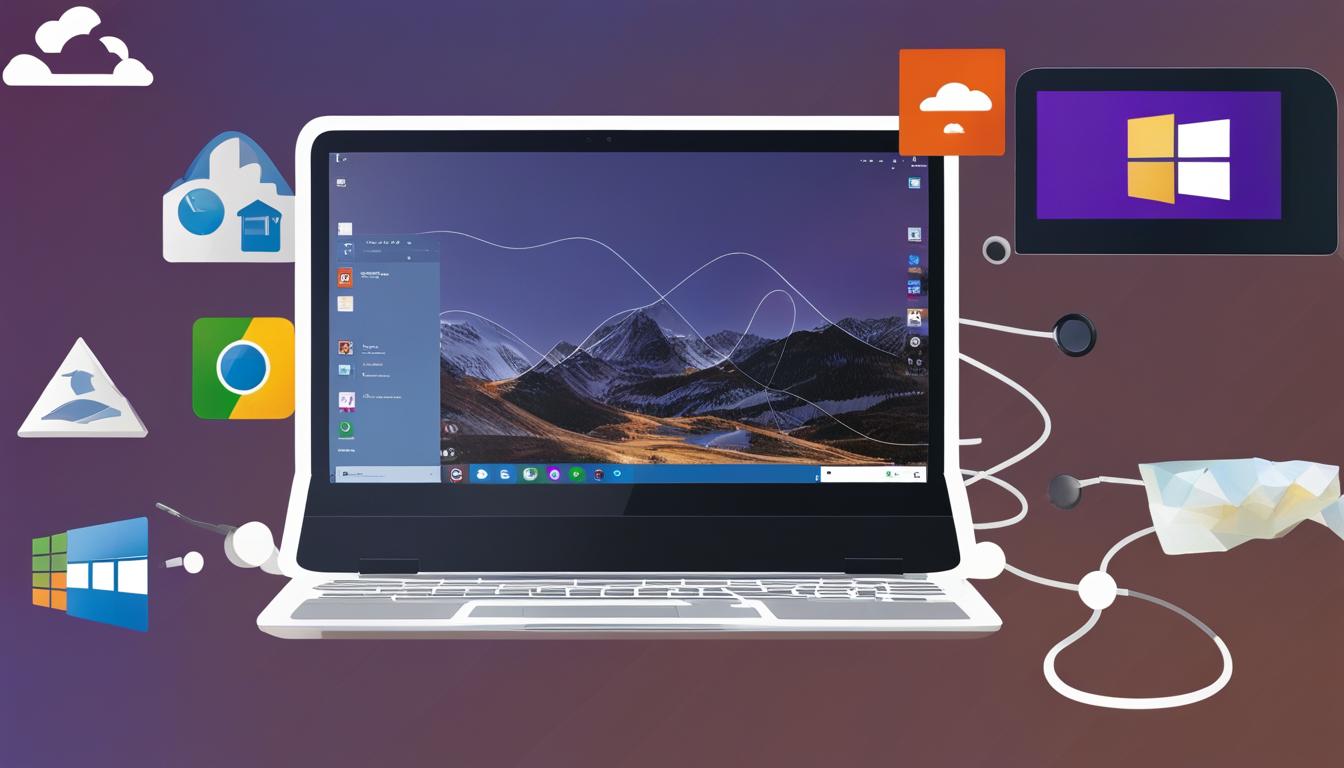Contents
- 1 Troubleshooting Common Connection Problems
- 2 Restarting Your Computer and Checking Device Settings
- 3 Troubleshooting Specific Connection Issues
- 4 Checking Internet Package and Speed
- 5 Scanning for Viruses and Malware
- 6 Troubleshooting DNS Issues
- 7 Checking Modem and Router
- 8 Evaluating Bandwidth Usage
- 9 Improving Wi-Fi Signal Strength
- 10 Conclusion
- 11 FAQ
- 11.1 How can I fix internet issues on Windows 10?
- 11.2 How do I restart my computer to fix internet issues?
- 11.3 How can I check and adjust Wi-Fi settings on Windows 10?
- 11.4 What should I do if the basic fixes don’t resolve my internet issues?
- 11.5 How can I check if my internet package is causing slow speeds on Windows 10?
- 11.6 Should I scan for viruses and malware to fix internet issues on Windows 10?
- 11.7 How can I troubleshoot DNS issues on Windows 10?
- 11.8 What should I check if I can’t connect to the internet at all on Windows 10?
- 11.9 How can I check bandwidth usage on Windows 10?
- 11.10 What can I do to improve Wi-Fi signal strength on Windows 10?
- 11.11 What should I do if I’m still experiencing internet issues on Windows 10?
If you’re facing internet connectivity issues on your Windows 10 device, don’t worry! There are several troubleshooting steps that can help you fix the problem and get back online quickly. In this guide, I will walk you through common solutions for resolving internet problems on Windows 10.
Key Takeaways:
- Experiencing internet problems on Windows 10? Take a deep breath and follow these troubleshooting steps.
- Start with basic fixes like running the network troubleshooter and checking Wi-Fi settings.
- Restart your computer and ensure you’re connected to the correct network.
- If the issue persists, try advanced solutions like scanning for viruses, checking DNS settings, and evaluating bandwidth usage.
- Remember to optimize your Wi-Fi signal strength for better connectivity.
Troubleshooting Common Connection Problems
When it comes to fixing internet connectivity on Windows 10, it’s important to start with some basic troubleshooting steps before diving into more advanced solutions. By following these initial fixes, you can often resolve common connection problems and get your internet up and running smoothly.
1. Running the Network Troubleshooter
If you’re experiencing no internet access on Windows 10, a good first step is to run the built-in network troubleshooter. This tool can automatically detect and resolve common network issues, helping restore your internet connection.
2. Ensuring Wi-Fi is Turned On
Make sure that Wi-Fi is enabled on your Windows 10 device. You can check this by clicking on the Wi-Fi icon in the taskbar and ensuring that the toggle switch is in the “On” position. If it’s off, simply toggle it on to enable Wi-Fi.
3. Checking for Recognized Wi-Fi Networks
If you’re connected to Wi-Fi but still have no internet access, it’s important to check if your device recognizes any Wi-Fi networks. Click on the Wi-Fi icon in the taskbar and see if any networks are listed. If not, there may be an issue with your wireless adapter or the Wi-Fi signal in your area.
4. Restarting Your Modem and Wireless Router
A simple but effective fix for network issues is to restart your modem and wireless router. To do this, unplug them from the power source, wait for about 30 seconds, and then plug them back in. This can help refresh the connection and resolve any temporary network issues.
By following these basic troubleshooting steps, you can often resolve common connection problems on Windows 10. If these fixes don’t solve the issue, it’s time to move on to more advanced troubleshooting methods.
| Connection Problem | Troubleshooting Method |
|---|---|
| No internet access | Run the network troubleshooter |
| Wi-Fi not working | Ensure Wi-Fi is turned on |
| No recognized Wi-Fi networks | Check for recognized Wi-Fi networks |
| Intermittent connectivity | Restart your modem and wireless router |
“By following these basic troubleshooting steps, you can often resolve common connection problems on Windows 10.”
Restarting Your Computer and Checking Device Settings
When it comes to troubleshooting internet issues on Windows 10, sometimes the simplest solutions can be the most effective. Restarting your computer is a quick and easy step that can often resolve many connectivity problems. It helps refresh the system and clears any temporary glitches that may be affecting your internet connection.
In addition to restarting your computer, it’s essential to check your Wi-Fi settings and ensure that you’re connected to the correct network. Incorrect network settings can lead to connectivity issues and prevent you from accessing the internet.
Here’s how you can restart your computer and check your Wi-Fi settings on Windows 10:
Restarting Your Computer
- Click on the Start button in the bottom left corner of your screen.
- Select Restart from the power options menu.
- Wait for your computer to restart and then check if the internet connection is restored.
Checking Wi-Fi Settings on Windows 10
- Click on the Wi-Fi icon in the system tray located at the bottom right corner of your screen.
- A list of available Wi-Fi networks will appear. Ensure that you’re connected to the correct network.
- If you don’t see the network you want to connect to, click on Network settings to access the Wi-Fi settings menu.
- In the Wi-Fi settings menu, click on Manage known networks to view and manage your saved network profiles.
- If necessary, select the correct network from the list of known networks and click on Connect.
By restarting your computer and verifying your Wi-Fi settings, you can eliminate common issues that may be causing internet connectivity problems on Windows 10. If these steps don’t resolve the issue, or if you encounter any other persistent problems, it’s recommended to proceed to the next section for more advanced troubleshooting solutions.
| Issue | Possible Cause | Solution |
|---|---|---|
| No internet connectivity | Temporary glitch or software error | Restart your computer |
| Unable to connect to the correct Wi-Fi network | Incorrect network settings | Check and adjust Wi-Fi settings |

Troubleshooting Specific Connection Issues
If you’re still experiencing internet issues on your Windows 10 device, there are specific troubleshooting steps you can take to resolve them. These advanced solutions can help fix connection problems and ensure a smooth online experience.
Check for Virus or Malware Infections
Virus or malware infections can sometimes affect your internet connection. It’s important to run a comprehensive scan using reputable antivirus software or Windows Defender to detect and remove any malicious programs.
Reset Your Router
Resetting your router can help resolve connectivity issues. Simply unplug the power source, wait for a few seconds, and then plug it back in. This process can help refresh the router’s settings and establish a stable connection.
Move Your Device Closer to the Router
If you’re experiencing weak Wi-Fi signals or dropouts, try moving your Windows 10 device closer to the router. Physical obstructions and distance can affect the strength of your Wi-Fi connection, so positioning your device in proximity to the router can improve signal reception.
Contact Your Internet Service Provider (ISP)
If the previous steps didn’t resolve the issue, it’s recommended to contact your ISP for further assistance. They can help diagnose network problems and provide specific instructions or settings to optimize your internet connection on Windows 10.
Update Network Adapter Drivers
Outdated or incompatible network adapter drivers can also cause internet connection issues. Visit the manufacturer’s website or use Windows Device Manager to check for driver updates. Installing the latest drivers can often resolve compatibility issues and improve network stability.
Reset DNS/TCP/IP Settings
Resetting the DNS and TCP/IP settings can help fix connectivity problems related to network protocols. Open the Command Prompt as an administrator and enter the commands “ipconfig /flushdns” and “netsh int ip reset”. Restart your computer for the changes to take effect.
By following these troubleshooting steps, you can troubleshoot and fix specific connection issues on Windows 10, ensuring a reliable and uninterrupted internet connection.
Checking Internet Package and Speed
If your internet connection on Windows 10 appears to be slower than expected, it’s important to ensure that you have the appropriate internet package and to measure the actual speed you are getting. By checking your internet package and running a speed test, you can identify any potential issues and take steps to improve your internet experience.
Verifying your internet package:
- Contact your internet service provider (ISP) to confirm the details of your current internet package. This includes the advertised speed and any data limitations.
- Ensure that the internet package you are subscribed to meets your internet usage needs. If necessary, consider upgrading to a higher-speed package to optimize your browsing experience.
Measuring your internet speed:
There are various online tools available, such as Speedtest.net, that allow you to measure your internet speed accurately. To measure your speed:
- Open a web browser on your Windows 10 device.
- Visit the Speedtest.net website or use a similar online tool.
- Click the “Go” or “Start” button to begin the speed test.
- Wait for the test to complete, and note the download and upload speeds displayed.
Comparing the measured speed with your subscribed package speed can help you determine if there are any discrepancies. If the measured speed is significantly lower than expected, it’s recommended to reach out to your ISP for further assistance in troubleshooting and improving your internet speed.

Note: It’s important to consider that various factors, such as network congestion and device limitations, can affect the actual internet speed you experience. Additionally, running the speed test multiple times at different times of the day can provide a more accurate representation of your internet speed.
Scanning for Viruses and Malware
Viruses and malware pose a significant threat to your internet connection and the overall performance of your Windows 10 system. To ensure a secure and uninterrupted browsing experience, it is crucial to regularly scan for these malicious entities and take the necessary steps to remove them.
Performing a thorough virus scan is essential in detecting and eliminating any harmful code that may be affecting your internet connectivity. Luckily, Windows 10 provides a built-in solution, Windows Defender, which offers reliable protection against various types of malware.
If you prefer using third-party antivirus software, there are reputable options available that offer advanced features and comprehensive protection. Make sure to choose a trusted antivirus program and keep it updated to safeguard your system from evolving threats.

Why Is Virus and Malware Scanning Important?
Viruses and malware can infiltrate your system through various means, such as infected downloads, email attachments, or malicious websites. Once inside, they can disrupt your internet connection, slow down your computer’s performance, steal sensitive information, and even compromise your online privacy.
By regularly scanning for viruses and malware, you can:
- Detect and remove any existing infections that might be affecting your internet connectivity.
- Prevent the spread of malware to other devices on your network.
- Protect your personal data and sensitive information from unauthorized access.
- Maintain optimal system performance and browsing speed.
Remember, prevention is key. Alongside regular scanning, it’s crucial to practice safe browsing habits, avoid suspicious downloads, and be cautious when opening attachments or visiting unfamiliar websites. These proactive measures can significantly reduce the risk of encountering viruses and malware.
| Virus and Malware Scanning Tips |
|---|
| 1. Keep your antivirus software up to date to ensure you have the latest virus definitions and protection. |
| 2. Schedule regular virus scans to automatically check your system for any threats. |
| 3. Enable real-time protection to prevent malware from entering your system in real-time. |
| 4. Be cautious when downloading files or software from the internet, and only obtain them from trusted sources. |
| 5. Avoid clicking on suspicious links or pop-up advertisements. |
| 6. Keep your operating system and software applications updated, as updates often include security patches. |
By following these best practices and incorporating regular virus scans into your cybersecurity routine, you can ensure a safer and more reliable internet experience on your Windows 10 device.
Troubleshooting DNS Issues
Sometimes, DNS servers can cause connection problems, leading to difficulties in accessing websites. To fix DNS issues on Windows 10, there are two effective troubleshooting methods you can try: flushing your DNS cache and changing the DNS server settings.
Flushing DNS Cache
Flushing your DNS cache can help resolve DNS-related issues on Windows 10. The DNS cache stores information about previously visited websites, and occasionally, this information can become outdated or corrupted. By flushing the DNS cache, you force your computer to clear this stored data and start fresh.
To flush the DNS cache on Windows 10, follow these steps:
- Open the Command Prompt by pressing the Windows key + R, then typing cmd and hitting Enter.
- In the Command Prompt window, type the command
ipconfig /flushdnsand press Enter. - Wait for the process to complete, and then close the Command Prompt window.
Changing DNS Server Settings
If flushing the DNS cache doesn’t resolve the issue, you can try changing the DNS server settings on Windows 10. By default, your computer uses the DNS server provided by your internet service provider (ISP). However, using alternative DNS servers can sometimes improve internet connectivity.
Here’s how you can change the DNS server settings on Windows 10:
- Open the Control Panel by pressing the Windows key + X and selecting Control Panel.
- Click on Network and Internet, then select Network and Sharing Center.
- On the left side of the window, click on Change adapter settings.
- Right-click on the network adapter you’re using (e.g., Wi-Fi or Ethernet) and select Properties.
- In the Properties window, select Internet Protocol Version 4 (TCP/IPv4) and click on Properties.
- Choose the option Use the following DNS server addresses and enter the preferred DNS server and alternative DNS server addresses.
- Click OK to save the changes.
By flushing the DNS cache and changing the DNS server settings, you can troubleshoot and fix DNS-related issues on Windows 10, ensuring a smooth browsing experience.
| DNS Server | Primary IP Address | Alternate IP Address |
|---|---|---|
| Google Public DNS | 8.8.8.8 | 8.8.4.4 |
| Cloudflare DNS | 1.1.1.1 | 1.0.0.1 |
| OpenDNS | 208.67.222.222 | 208.67.220.220 |
Try using these popular DNS server addresses if you’re unsure which ones to choose.

Checking Modem and Router
If you’re unable to connect to the internet at all, it’s important to diagnose any issues with your modem and router. By checking the status indicators and referring to the device documentation, you can gain valuable insights into the problem and find potential solutions. Understanding the LED lights on your modem and router is a key step in troubleshooting modem and router issues on Windows 10.
Each modem and router may have different LED indicators that convey different information about the device’s status. Here are some common indicators that you should check:
| Indicator | Description |
|---|---|
| Power | Indicates whether the modem or router is receiving power. Make sure the device is properly connected to a power source. |
| Internet | Shows if the modem or router is successfully connected to the internet. If this light is off or red, there may be a problem with the internet connection. |
| Wi-Fi | Indicates the status of the wireless network. If this light is off or blinking, there may be an issue with the Wi-Fi connection. |
| Ethernet | Shows the status of the Ethernet connection. If you’re using a wired connection, ensure that the Ethernet light is on and not blinking. |
By checking these indicators, you can gather valuable information about the status of your modem and router. This information can help you diagnose and resolve any issues with your internet connection on Windows 10.
Remember to consult the documentation provided with your specific modem and router to understand the meaning behind each LED light. In case you encounter any problems, you can also reach out to the manufacturer’s support for further assistance.
Evaluating Bandwidth Usage
If you’re experiencing slow internet speeds on your Windows 10 device, it’s important to evaluate the bandwidth usage of your programs and devices. Identifying applications that consume a significant amount of bandwidth can help optimize your network usage and improve internet performance.
One way to monitor network usage is through the Task Manager on Windows 10. To access the Task Manager, simply right-click on the taskbar and select “Task Manager” from the dropdown menu. In the Task Manager, navigate to the “Performance” tab and click on “Network” to view the network activity of each running application.
By analyzing the data provided in the Task Manager, you can identify bandwidth-intensive applications and take necessary actions to manage them effectively. For example, you may choose to limit the bandwidth usage of certain programs or schedule their activities during off-peak hours to optimize network performance.
Optimizing network usage can also involve configuring settings on devices connected to your Windows 10 network. For devices that rely heavily on internet connectivity, such as smart TVs, gaming consoles, or streaming devices, it’s important to ensure they are not consuming excessive bandwidth unnecessarily. Adjusting the settings or limiting their access to certain applications or services can help improve overall network performance.
By evaluating and optimizing bandwidth usage, you can enhance your Windows 10 internet experience and enjoy faster and more reliable connectivity.
Improving Wi-Fi Signal Strength
Weak Wi-Fi signals can be frustrating, leading to poor internet connectivity on your Windows 10 device. To ensure a more reliable connection and boost your Wi-Fi signal, try the following tips:
- Connect your computer directly to the router: By using an Ethernet cable, you can bypass any potential Wi-Fi signal issues and directly connect your device to the router. This can greatly improve your internet speed and stability.
- Adjust the router’s position: The placement of your router can significantly impact the strength of your Wi-Fi signal. Try positioning the router in a central location within your home or office, away from obstructions such as walls or furniture. This can help optimize signal coverage and improve reception throughout your space.
- Consider Wi-Fi extenders or mesh systems: If you’re struggling with weak signals in certain areas of your environment, Wi-Fi extenders or mesh systems can be a valuable solution. These devices work by expanding your network coverage, providing a stronger and more consistent Wi-Fi signal across multiple rooms or floors.
By implementing these measures, you can enhance the Wi-Fi reception on your Windows 10 device, ensuring a smoother and more reliable internet experience.
Conclusion
Resolving internet issues on Windows 10 requires a systematic troubleshooting approach. By following the steps outlined in this guide, users can often restore internet connectivity and enjoy a seamless browsing experience. From basic fixes to advanced solutions, there are various techniques available to address connectivity problems on Windows 10.
It’s important for users to stay vigilant and regularly update firmware to ensure optimal network performance. Keeping devices up to date with the latest software can help prevent compatibility issues and improve overall connectivity. Additionally, users should consider seeking support from their internet service provider (ISP) if persistent issues persist, as they can provide specialized assistance and troubleshooting steps.
With the tips and techniques outlined in this guide, users can approach troubleshooting internet problems on Windows 10 with confidence. By systematically addressing potential issues, users can navigate and resolve connectivity problems effectively, leading to a smoother and more enjoyable online experience.
FAQ
How can I fix internet issues on Windows 10?
There are several troubleshooting steps you can take to fix internet issues on Windows 10. These include running the network troubleshooter, checking Wi-Fi settings, restarting your computer, and ensuring you’re connected to the correct network. You can also try advanced solutions like scanning for viruses, resetting your router, and updating network adapter drivers.
How do I restart my computer to fix internet issues?
To restart your computer on Windows 10, click on the Start menu, select the Power icon, and choose Restart. Wait for the system to restart and check if the internet connectivity issue is resolved.
How can I check and adjust Wi-Fi settings on Windows 10?
To check Wi-Fi settings on Windows 10, click on the Start menu, select the Settings icon, choose Network & Internet, and click on Wi-Fi. From there, you can ensure Wi-Fi is turned on and check for recognized Wi-Fi networks. You can also click on the network you’re connected to and select Properties to access advanced settings.
What should I do if the basic fixes don’t resolve my internet issues?
If the basic fixes don’t resolve your internet issues on Windows 10, you can try advanced troubleshooting steps. These include checking for virus and malware infections, resetting your router, moving your device closer to the router, contacting your internet service provider (ISP) for assistance, updating network adapter drivers, and resetting DNS/TCP/IP settings.
How can I check if my internet package is causing slow speeds on Windows 10?
To check if your internet package is causing slow speeds on Windows 10, you can perform a speed test using online tools like Speedtest.net. This will measure your current download and upload speeds and compare them to the expected speeds provided by your ISP.
Should I scan for viruses and malware to fix internet issues on Windows 10?
Yes, scanning for viruses and malware is an important step in fixing internet issues on Windows 10. Use built-in Windows Defender or reputable third-party antivirus software to perform a thorough scan of your system. This will help identify and remove any malicious code that may be affecting your internet connectivity.
How can I troubleshoot DNS issues on Windows 10?
To troubleshoot DNS issues on Windows 10, you can try flushing your DNS cache and changing the DNS server settings. Flushing the DNS cache can help clear any temporary DNS-related problems, while changing the DNS server settings can bypass potential issues with your current DNS provider.
What should I check if I can’t connect to the internet at all on Windows 10?
If you can’t connect to the internet at all on Windows 10, you should check the status indicators on your modem and router. Understanding the LED lights and consulting the documentation for your specific devices can help diagnose any modem or router issues that may be affecting your internet connectivity.
How can I check bandwidth usage on Windows 10?
To check bandwidth usage on Windows 10, you can use the Task Manager. Press Ctrl+Shift+Esc to open the Task Manager, go to the Performance tab, and click on the Wi-Fi or Ethernet section. Here, you can monitor the network usage of different programs and devices.
What can I do to improve Wi-Fi signal strength on Windows 10?
To improve Wi-Fi signal strength on Windows 10, you can try connecting your computer directly to the router with an Ethernet cable. This ensures a stable wired connection. Additionally, you can adjust the position of your router for better coverage or consider using Wi-Fi extenders or mesh systems to enhance reception in different areas of your home or office.
What should I do if I’m still experiencing internet issues on Windows 10?
If you’re still experiencing internet issues on Windows 10 after trying the troubleshooting steps mentioned above, it may be necessary to seek support from your internet service provider (ISP). They can help diagnose and resolve any network issues that may be affecting your internet connectivity.
